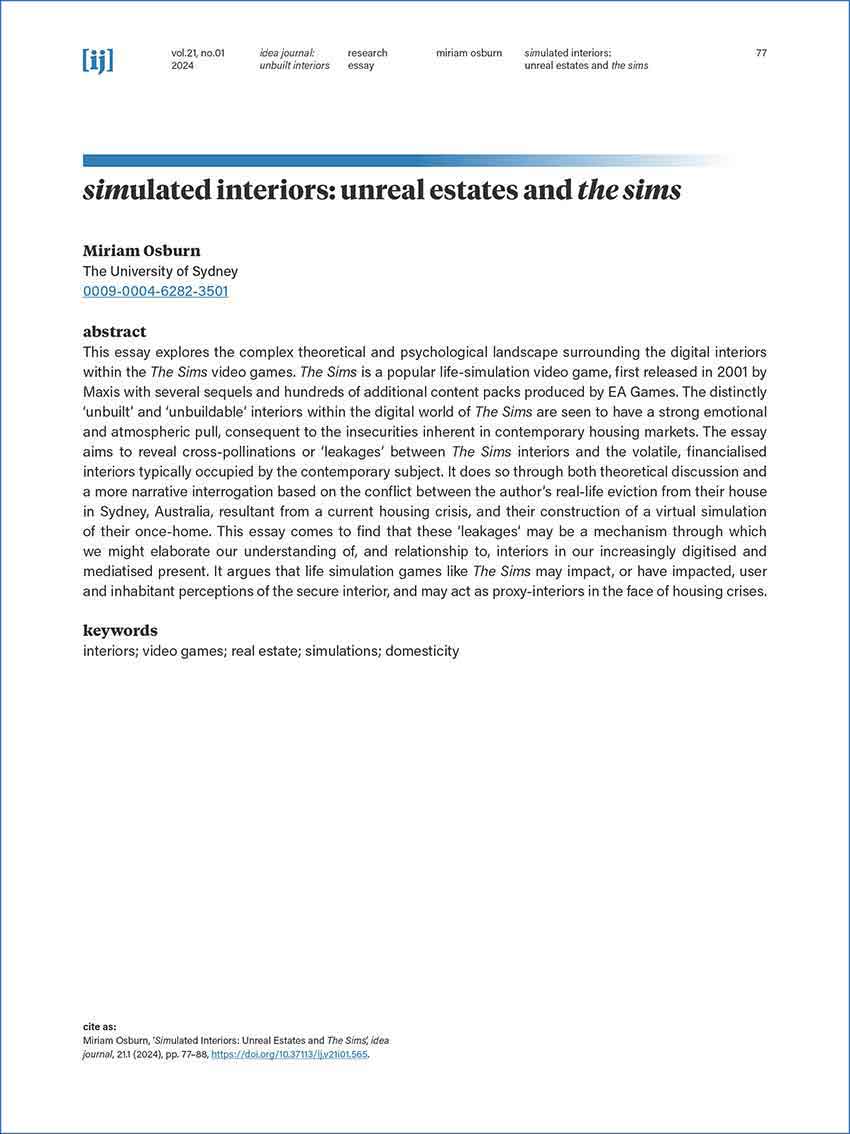Simulated Interiors Unreal Estates and The Sims
Main Article Content
Abstract
This essay explores the complex theoretical and psychological landscape surrounding the digital interiors within the The Sims video games. The Sims is a popular life-simulation video game, first released in 2001 by Maxis with several sequels and hundreds of additional content packs produced by EA Games. The distinctly ‘unbuilt’ and ‘unbuildable’ interiors within the digital world of The Sims are seen to have a strong emotional and atmospheric pull, consequent to the insecurities inherent in contemporary housing markets. The essay aims to reveal cross-pollinations or ‘leakages’ between The Sims interiors and the volatile, financialised interiors typically occupied by the contemporary subject. It does so through both theoretical discussion and a more narrative interrogation based on the conflict between the author’s real-life eviction from their house in Sydney, Australia, resultant from a current housing crisis, and their construction of a virtual simulation of their once-home. This essay comes to find that these ‘leakages’ may be a mechanism through which we might elaborate our understanding of, and relationship to, interiors in our increasingly digitised and mediatised present. It argues that life simulation games like The Sims may impact, or have impacted, user and inhabitant perceptions of the secure interior, and may act as proxy-interiors in the face of housing crises.
Article Details
Author/s and or their institutions retain copyright ownership over works submitted to Idea Journal, and provide the Interior Design / Interior Architecture Educators Association with a non–exclusive license to use the work for the purposes listed below:
- Make available/publish electronically on the Idea Journal website
- Publish as part of Idea Journal's online open access publications
- Store in electronic databases, on websites and CDs/DVDs, which comprise of post-publication articles to be used for publishing by the Interior Design / Interior Architecture Educators Association.
Reproduction is prohibited without written permission of the publisher, the author/s or their nominated university. The work submitted for review should not have been published or be in the process of being reviewed by another publisher. Authors should ensure that any images used in their essays have copyright clearance.

